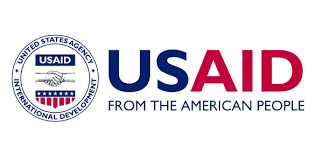Total number of Nigerians in need of food assistance could dip to 12.99 million next March from the current 17.99 million, according to Famine Early Warning Systems Network (FEWS NET), a United States Agency for International Development (USAID)-funded activity.
It is a leading provider of early warning and analysis on acute food insecurity. The use of the Integrated Food Security Phase Classification (IPC) scale for Acute Food Insecurity is intended to help governments and other humanitarian actors quickly understand a situation of acute food insecurity (or anticipated acute food insecurity) and take action.
In its Food Assistance Outlook Brief, on projected population in need of urgent food assistance in March 2025 and further, FEWS NET noted that typically high needs are expected into early 2025,in the Northeast and Northwest driven by conflict, economic, and weather shocks.
According to it, a number of households in these areas are expected to experience large food consumption gaps reflected in very high acute malnutrition and excess mortality. It attributed this to the impacts of conflict which are most severe.
In March 2025, FEWS NET expects the number of people in need of urgent humanitarian food assistance to be highest in the countries of Yemen, Sudan, the Democratic Republic of Congo, Nigeria, and Ethiopia.
Out of the projected total 130-140 million people in need across FEWS NET-monitored countries, Yemen, Sudan, and the Democratic Republic of Congo are each expected to contribute 10 percent or more of total food assistance needs. Nigeria, Ethiopia, Afghanistan, and South Sudan are each expected to contribute 5-9 percent of total food assistance needs.
In comparison to March this year, FEWS NET expects the number of people in need to be higher in Sudan, Nigeria, South Sudan, Zimbabwe, Malawi, Mozambique, Kenya, Haiti, Chad, Angola, and Lesotho. In contrast, FEWSNET expects the number of people in need of food assistance to be lower in Ethiopia, Burkina Faso, Afghanistan, and Venezuela. In all other countries, food assistance needs are expected to be similar to last year.
The brief presents FEWS NET’s projected population in need of urgent humanitarian food assistance and the highest anticipated IPC Phase in each FEWS NET-monitored country seven months into the future.
The projected population in need of urgent humanitarian food assistance is also compared to last year and the recent five-year average, and categorised as higher, similar, or lower; for some countries.
The Population in Need (PIN) is the total number of people requiring urgent humanitarian food assistance, while IPC profiles the categorisation of households experiencing different levels of acute malnutrition rates. It ranges from less than 5 percent to 30 percent.
Those in Phase 1 experience minimal outcomes and acute malnutrition rates below 5 percent while those under phase 5 have almost no food and can not support their basic needs. Starvation, death and destitution are apparent.
Under phase 5, at least 20 percent of households in an area are experiencing famine and more than 2 per 10,000 people are dying each day.
The IPC was devised by a global partnership of governmental and non-governmental agencies.

